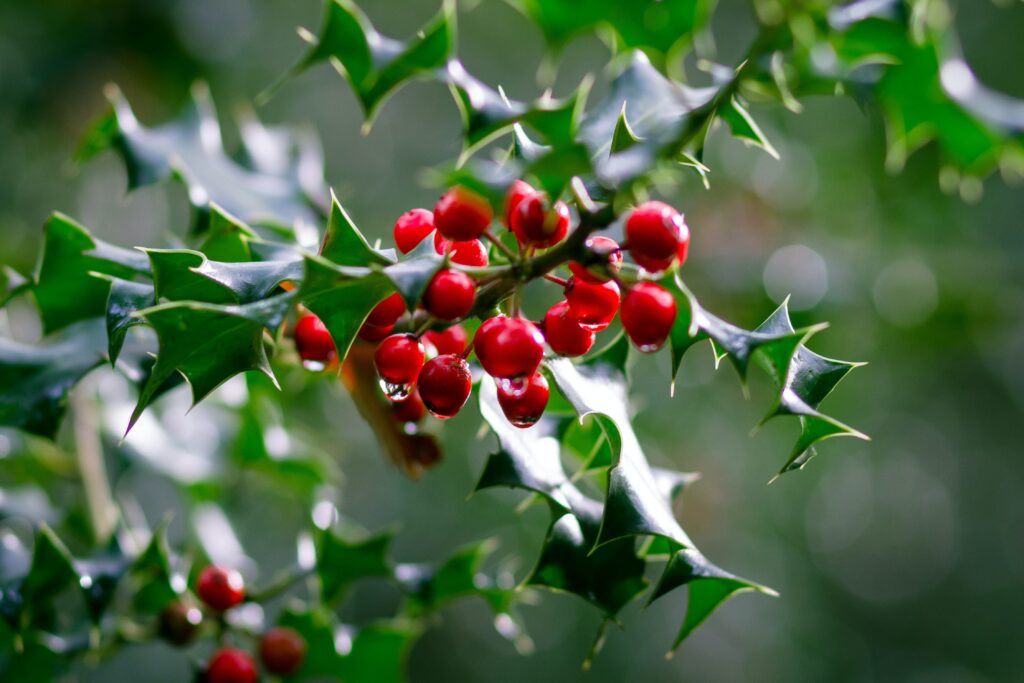Meet and One Veg: The Holly Bush
In the third installment of ‘Meet and One Veg’ we deep dive into the festive and famous holly tree, whose special religious significance makes it synonymous with this time of year. In fact, holly’s symbolism has endured through cultures for a millennia. And what is more, you can find it in more than one Edible Campus garden. So, for the sake of knowing our local nature better, here are 10 facts about the wonderfully mystical plant that may surprise you.
- In Christian traditions, holly is hung on doors because its sharp leaves symbolize the crown of thorns worn by Christ; the red berries represent his blood; and the tree’s evergreen quality is a metaphor for eternal life.
- Before the royal family popularized the modern Christmas trees in the 1800s, the holly tree was considered the evergreen Christmas tree decoration. In some parts of the UK, holly was just called ‘Christmas’.
- Pre-dating Christianity, the Druids also hung holly over their doors for protection and luck. The holly also marked the winter solstice.
- In Scotland, holly is called Chuillin in Gaelic, which appears in place names all over the country including Cruach-doire-cuilean on Mull where the McLean clan wore badges that showed holly leaves.
- The holly tree is the evergreen twin of the oak tree in Celtic mythology. While the oak controls the light months of the year, the holly tree controlled the darker, winter months.
- Celtic chieftans wore a holly wreath as a crown for good luck
- The leaves of the American holly (I. opoca) have been brewed into teas and used to treat colds, flu, measles and pneumonia.
- The Romans gifted wreaths of holly during the festival, Saturnalia, as a celebration of Saturn, their God of harvest.
- The flowers of mature male holly trees are a pale yellow while the female’s are white. If the bush has berries then it is definitely female!
- In European mythology, holly trees were associated with thunder gods, Thor and Taranis, and traditionally planted to protect homes from lightening. According to Trees for Cities, science has shown that the spines on holly leaves can act as mini-conductors.


